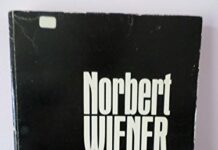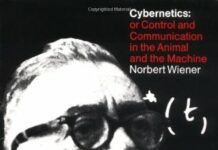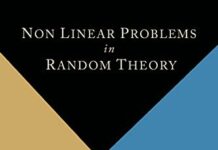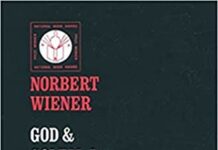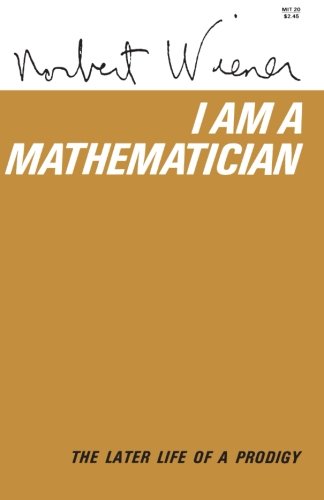
Ebook Info
- Published: 1964
- Number of pages: 380 pages
- Format: PDF
- File Size: 20.06 MB
- Authors: Norbert Wiener
Description
These two volumes ( I Am Mathematician and Ex-Prodigy) comprise Norbert Wiener’s autobiography. Sometimes with humor and sometimes with sadness, they render an account, without sentiment, of the life of the world-renowned mathematician and scientist. An unusual life story, Norbert Wiener’s penetrating observations accompany the fascinating details describing the maturation of a major world scientist.
User’s Reviews
Editorial Reviews: About the Author Norbert Wiener (1894–1964) served on the faculty in the Department of Mathematics at MIT from 1919 until his death. In 1963, he was awarded the National Medal of Science for his contributions to mathematics, engineering, and biological science. He was the author of many books, with Cybernetics: On Control and Communication in the Animal and the Machine and God and Golem: A Comment on Certain Points Where Cybernetics Impinges on Religion among the most well-known.
Reviews from Amazon users which were colected at the time this book was published on the website:
⭐This is the sequel to Weiner’s book, “Ex-Prodigy”. Covers his development into a world class mathematican. Education at Oxford, months at Göttingen, working at MIT, international work in China, etc..Provides extensive detail and vivid descriptions of the people and his feelings. Reads almost as a interesting travelogue.However, Weiner’s status as a world class mathematican adds depth. His opinions, regularly expressed, are jems. He had to return home from England because of WW1.”The present generation, which has been brought up with crisis as its daily associate, can scarcely be aware of the shock with which the war impinged on my contemporaries.” (25) His view of mathematics: “Hardly any non-mathematican will admit that mathematics has a cultural and aesthetic appeal, that it has anything to do with beauty or powers or emotion.” (62)Discusses the post war boom.”The paper values of a monetary nature involved a whole series of paper moral values. . . . He did not share with me the hope that a mild depression might turn us away from the fleshpots of Egypt and to a greater evaluation of moral and intellectual matters.” (131)”It was clear that the world was going to be subjected to shocks which the patched up economic system that came into being after the First World War, and the patched up social system that went with it, might not be able to sustain.” (173)So true.Many others such insightful, trenchant comments: He laments the effect of the control of the scientific community by the military during the war. He thinks this change is permanent. The impulse to drop the bomb was affected by the desire to exercise power by the few over the many. His sadness from seeing the loss of an international open scientific culture, subsumed by nationalism.The love for “gadgets” replacing the love for people. And many other similar observations. Great!The nine page epilogue is worth the price of the book. Presenting his view of scientific practice:”I am lucky to have been born and to have grown up before the First World War, at a period when the vigor and élan of international scholarship had not been yet swamped. . . . From the bottom of my heart I pity the present generation of scientists, many of whom, whether they wish it or not, are doomed by the “spirit of the age” to be intellectual lackeys and clock punchers.” (360)”There are scientific ideas which we can trace clearly to the time of Leibniz, a quarter of a millennium ago, which are just beginning to find their applications in industry. . . . The great grove of science must be left to long-time institutions capable of formulating and maintaining long-time values. In the past, the Church was of those institutions, and, even though it has somewhat fallen from its high estate, it has given birth to the universities and other intellectual institutions, such as academies, which themselves have a continuous life lasting over centuries.” (362)Fascinating, this from a secular Jew.The attack on individual science, he explains thus:”Behind this drive to the mass attack there are a number of strong psychological motives. Neither public nor the big administrator has too good an understanding of the inner continuity of science, but they both have seen its world shaking consequences, and they are afraid of it. Both of them want to decerebate the scientist, even as the Byzantine State emasculated its civil servants. Moreover, the great administrator who is not sure of his own intellectual level can aggrandize himself only by cutting his scientific employees down to size.” (364)Undoubtedly, the voice of sad experience.Weiner presents as honest, likeable, knowledgeable and careful. Not condemning, but willing to offer valid and useful criticism. This book is really written to teach and even warn, especially the student starting in science. Nevertheless, I enjoyed a brief look into a world that affects so much of modernity.
⭐After reading a Japanese translation, I started to read the original version to clarify some ambiguities caused by the translation.The autobiography shows that Norbert Wiener is a genius, and only the genius can invent truly remarkable machines.
⭐
Keywords
Free Download I Am a Mathematician (MIT Press) in PDF format
I Am a Mathematician (MIT Press) PDF Free Download
Download I Am a Mathematician (MIT Press) 1964 PDF Free
I Am a Mathematician (MIT Press) 1964 PDF Free Download
Download I Am a Mathematician (MIT Press) PDF
Free Download Ebook I Am a Mathematician (MIT Press)
